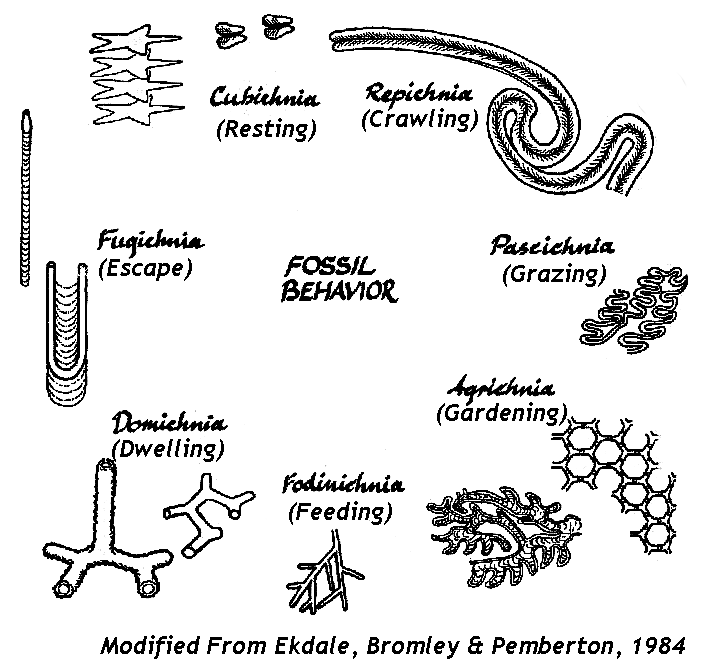|
.gif)

firm grounds
glossifungites
trace fossils
|
The paragraphs that follow represent a paraphrasing of some of the materials that can be seen on the web page for Ichnology Research Group (IRG) at the University of Alberta, Edmonton, Canada .
Ichnofossils are an expression of the alteration of the depositional fabric of in sedimentary rocks by living organisms. Often the organism that produced these structures has left no skeletal remains and it is for this reason the products of their activities are known as "trace" fossils. Common among these structures are burrows, borings, trails and tracks.
Sometimes these biogenic sedimentary structures have long temporal ranges and are preserved intact. Should these trace fossils be common in un-fossiliferous rocks they can extend the geologists capability to interpret the depositional setting of those rocks. Assemblages of trace fossils used to determine ancient depositional settings and sedimentary facies are known as "ichnofacies", as for instance those of "glossifungites". Some of the behaviors represented by trace fossils recognized by Seilacher (1953, 1964and 1967b) are illustrated on the Figure below.

The origin of trace fossils may be difficult to interpret, complicating their use as a means of determining deposition setting, particularly when:
- Groups of organisms produced single structures.
- The same individual or species produce different structures corresponding to different behaviors or identical behavior with different substrates, as with firm grounds versus a cemented rock surface.
- Identical structures are produced by the activity of systematically different trace making organisms whose behavior is similar.
Reference
Frey, Robert W., and S. George Pemberton (1985), Biogenic Structures in Outcrops and Cores. I. Approaches to Ichnology, Bulletin of Canadian Petroleum Geology, Vol. 33 No. 1, Pages 72-115
|